The key to continually generating creative photography ideas is to never become complacent about your approach and technique. Although it’s essential to develop your own tried and tested methods, stagnation comes when we begin to assume that these methods are the solution to every photographic challenge we encounter.
In order to keep myself on my toes, I’ve put together a list of six ideas, tactics, and techniques designed to challenge complacency and keep creativity levels high. If you’ve ever felt like you’re just going through the motions or struggled to stay creative in your food photography, you might find them useful too.
“Discover the recipes you are using and abandon them” – Brian Eno and Peter Schmidt, Oblique Strategies
After working as a photographer for a while we all tend to build up a little repertoire of tricks and failsafe techniques we can resort to whenever inspiration is lacking. Photographic recipes, we might call them.
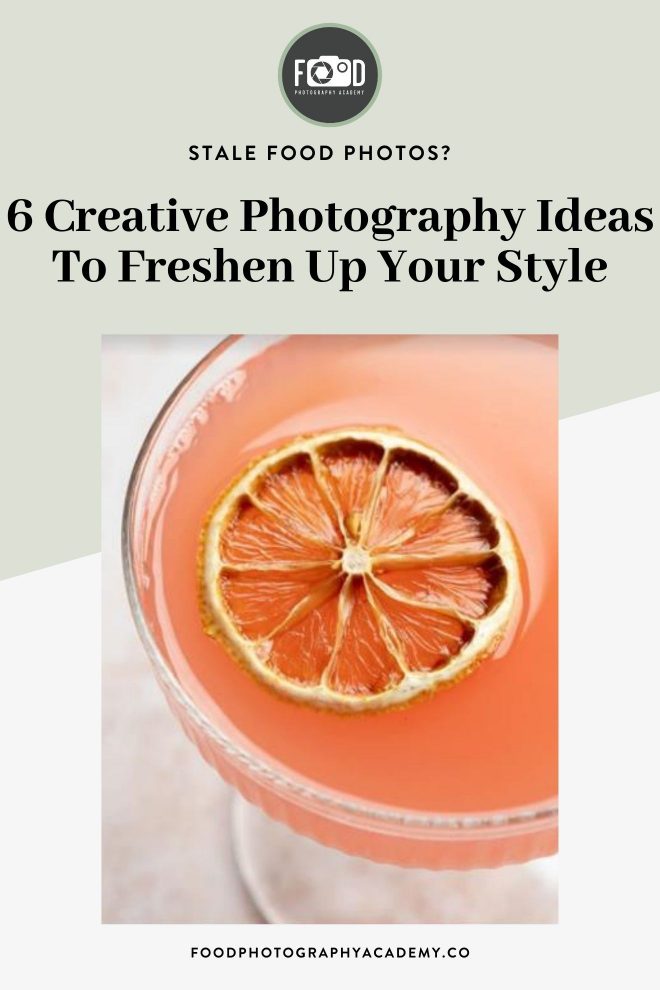
This is actually a positive thing; the mark of a professional. And it’s precisely because of this skillset that we are able to guarantee quality results to our clients every single time. What’s more, these signature methods are also a big part of what we mean when we say that a photographer has developed a personal style of their own.
The problem is, having established a way of working that reliably delivers interesting results, if we’re not careful we can easily slip onto autopilot and just start “phoning it in.” At which point, even if the results are still perfectly acceptable, they’re at risk becoming considerably less interesting, and what was once an innovative style can quickly turn into self-parody.
In an ideal world, your best work will always be your most recent work: this shows that you are continually evolving. But to maintain that momentum, you need to keep your enthusiasm fresh and your ideas creative. This means maintaining a steady flow of creative photography ideas.
If you’re anything like me, you probably produce your best work when a project offers a good balance between both familiar terrain and new territory. For sure, if you’re forced to deviate too far from your own personal style and interests, it can be hard to retain enthusiasm for the shoot; or you may even feel out of your depth technically. But to keep on treading the same old ground all the time is often just as equally detrimental to creativity.
For me the sweet spot is usually when I’m fully in my realm; yet still challenged in some way. Unfortunately, though, not every job offers an equal mix of both solid ground and new heights to scale. So if we want to remain stimulated and keep on evolving as photographers, we can’t always rely on the project brief to provide us with the exact conditions we need. Instead we must develop tricks of our own that will allow us to create the necessary balance of creative elements on any shoot we do.
Here are a few that work for me, and which you might like to try for yourselves.
01. Stop Down for Detail
Everyone loves a super-fast lens for a bit of sexy out-of-focus action. And there’s nothing like shooting with a shallow depth-of-field for getting the tastebuds watering. But just because you can achieve the selective focus look, doesn’t necessarily mean that you should. Indeed too much of a good thing can quickly become repetitive, and just like any distinctive photographic technique, selective focus needs to be employed with discretion – and only when really called for – or it’ll soon turn into a tiresome gimmick.
It’s not just about overdoing a visual trick though. One of the main reasons for shooting at a wide aperture is to blow the background out of focus, drawing greater attention to the subject. But when the blur itself becomes a distraction, or a lack of sufficiently sharp detail leaves nothing for the viewer’s eye to rest upon, stopping down to a more moderate f/stop will likely result in a much more satisfying shot.
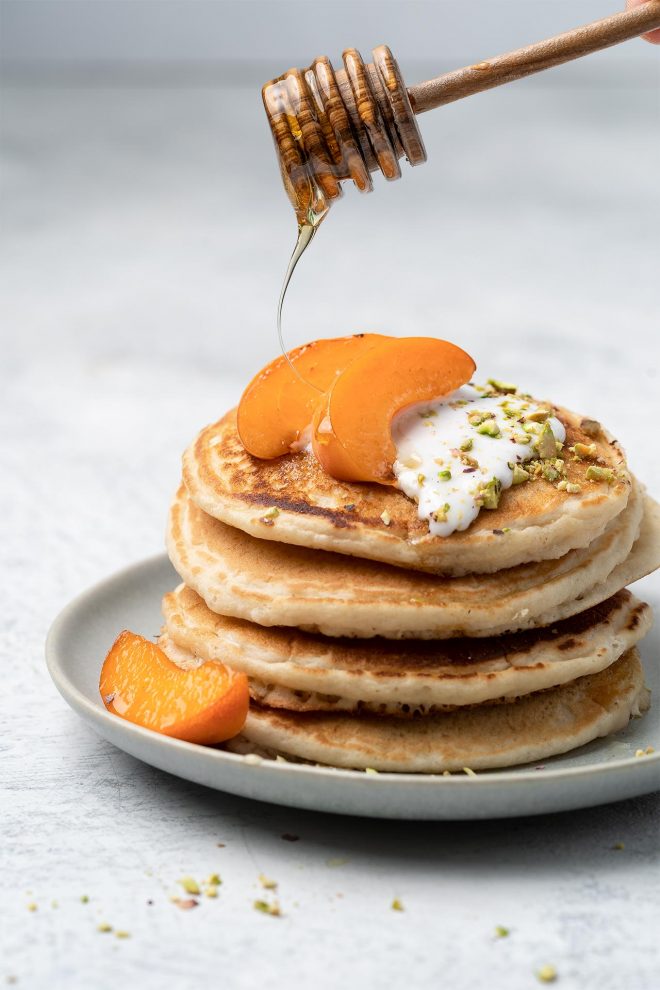
In this image, I used an aperture narrow enough to make sure the pancakes were in focus from front to back, whilst maintaining a slightly blurred backdrop.
So next time you’re about to set an aperture of f/1.2, take a moment to consider if it’s really the best approach for the subject.
02. Take a Step Back
Similarly, as food-obsessives we can sometimes get so caught up in the delicious particulars of a dish that we lose sight of the bigger picture. Close-ups of detail and texture can be very attractive, but there’s also the risk that, by showing the subject in this very artificial and mechanical way – removed from all context – something of the food’s simple integrity can become lost in the process.
It’s often good to take a step back from the subject and remind yourself what exactly is the purpose of the shot you’re trying to make. It’s not always about showing off our clever compositional skills as a photographer. Indeed, sometimes a more natural, human point of view – one that just lets the food speak for itself – will prove most effective.
In this brussels sprout photo I took just after I got my first macro lens, you can see that I went a little crazy with the close up…
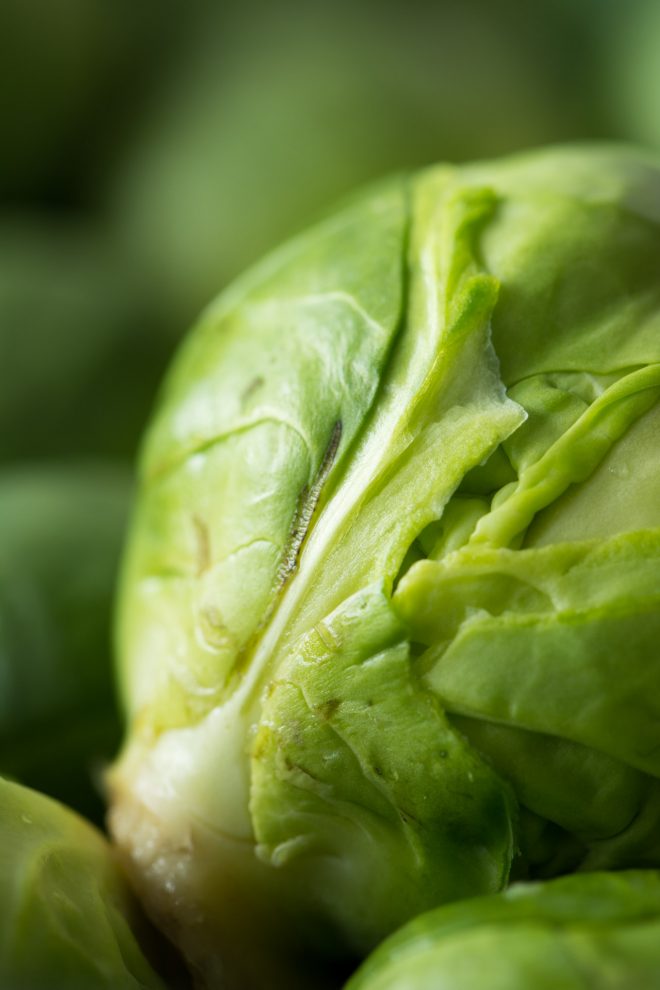
Fast forward a few years, and I learned how to capture close ups a little more appropriately…

Related: Everything You Need To Know About Macro Lenses
03. Change Your Point of View
Although shooting handheld can often make for lively and varied compositions, if this is your default approach to food photography you might find that using a tripod will open up quite different compositional possibilities. Not only this, but shooting on a tripod will also help you to produce tack-sharp photos every time, while permitting you to make minor adjustments to the set-up without losing your position.
Nonetheless, it’s always good to explore the scene handheld first, so as to discover the best angles before setting up the tripod. Meanwhile, if instead you’re the kind of photographer who tends to just plant the camera on a tripod and leave it there for the entire session – only ever tweaking the dish, props or lighting, but not your angle – then shooting a bunch of handheld images can be a great way to loosen things up and get the creative juices flowing again.
Even if you feel happier sticking to your locked-down methods, maybe once you’ve shot a few “safe” images on the tripod, you could try finishing up the session handheld – photographing it from as many angles as possible.

This image was one of my handheld images I took at the end of a shoot just to play around. It turned out to be my favourite image of the day!
Related Post: The 3 Best Camera Angles For Your Food Photography
04. Ditch the “Safety Props”
We all have them; those “go to” items that we know will add a little life to even the dullest of setups. Whether it’s the old trick of the crumpled napkin on the side; the repeated use of a few carefully scattered nuts and berries; or a favorite beat-up old apple-crate you know will inject a little rustic charm into any shot, there are certain items we all tend to fall back on in lieu of more creative photography ideas.
To be fair, as a professional food photographer you’re expected to have an arsenal of secret weapons just such as these to draw upon whenever necessary. But realistically there’s a limit to how many times you can get away with using the same old props before your work will start to suffer.
If you find yourself reaching for the same items again and again, it may be time to source yourself some new props to play with. Alternatively you might even want to consider ditching the props altogether: at least for a few shots. Pushing yourself to concentrate on nothing but the dish, lighting, and composition – without the aid of supplementary elements – can often produce surprisingly fresh results.
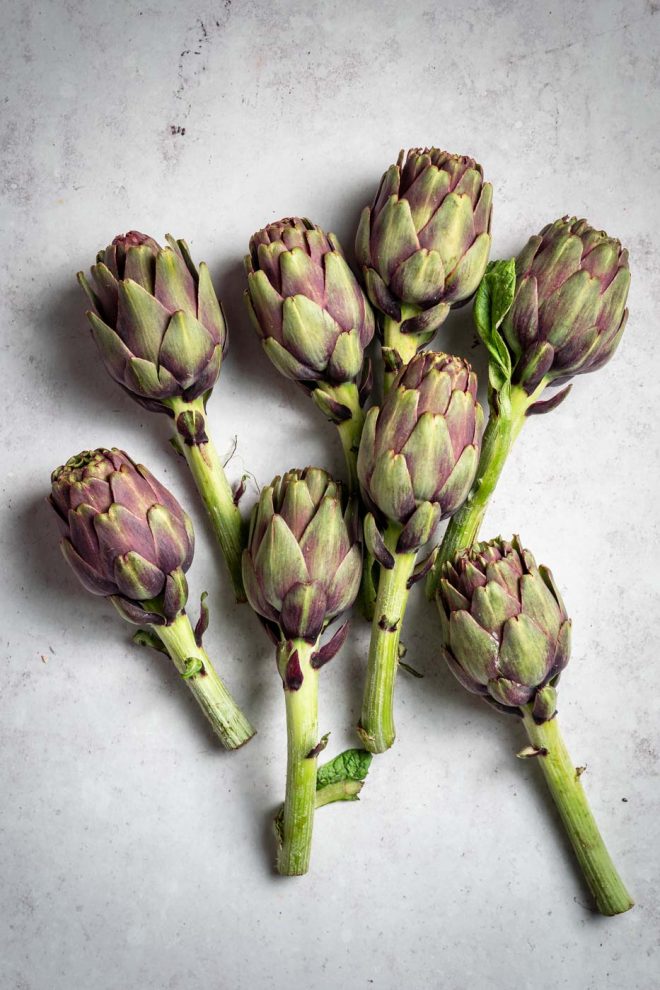
Related: My Top 5 Food Styling Tricks For Food Bloggers
05. Resurrect the Dead
A lot of the tips here are about questioning your habits in order to avoid repetition. But while it’s important not to become stuck in a rut, revisiting old ground can occasionally prove fruitful.
As you progress as a photographer it can be easy to assume that you’ve fully milked the potential of older ways of shooting and move on to newer techniques without looking back. Often this is the right solution. But other times there may be areas we’d overlooked first time round that are still ripe for exploration if viewed in a different light. For this reason it can sometimes be beneficial to return to old photographic approaches after a break: simply going through your old work can often bring to light new creative ideas for future photography sessions.
06. Oblique Strategies
Back in the ‘70s the musician Brian Eno and his friend Peter Schmidt developed a series of prompt cards designed to relieve creative block: grab a card from the pile at random, and then follow whatever short but ambiguous instructions are written on it.
Naturally, when Eno put together the Oblique Strategies, he primarily had himself and other musicians in mind. And so prompts such as “fill every beat with something,” “put in earplugs,” and “do the words need changing?” are likely to be of only limited relevance to photographers.
However, many of Eno’s cards can actually be pretty helpful in sparking interesting creative photography ideas. For example, with a little imagination phrases such as “into the impossible,” “simple subtraction,” “emphasize repetitions,” “give way to your worst impulse,” “turn it upside down,” “use an unacceptable color,” “humanize something free of error,” “emphasize the flaws,” and even “abandon normal instruments,” could all be quite easily interpreted in photographic or culinary form. As could many others contained in the various editions of Oblique States that have been released over the years.
Looking for inspiration for your next shoot? Pick a card!
Final Thoughts
In order to stay on top of your game as a photographer it’s important to always remain challenged and stimulated by our work. Unfortunately, though, we can’t always rely upon the projects that pay the bills to provide that kind of inspiration. Yet still we need to produce stunning images every time, no matter the job.
Clearly, then, we’ll need to discover our own methods for maintaining that level of creativity and enthusiasm. With that in mind, hopefully you’ve found some of the creative photography ideas listed here inspiring!
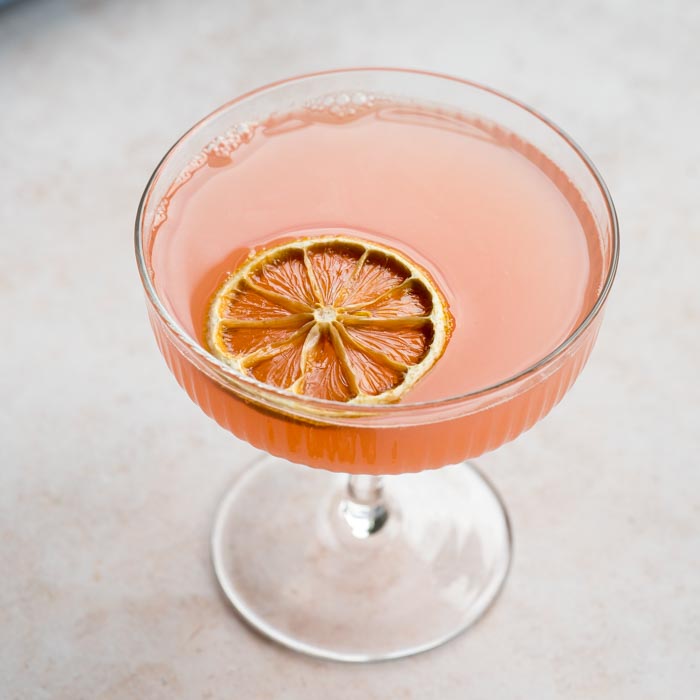
Hi Lauren,
With your crumpet/pancake shot, the “wood glue” doesn’t appear to be mouth watering. Try the shot with shaving cream, which you can shape & give more height.
Just a thought ! Would think that you are aware of this trick
Haha what wood glue?! It’s topped with coconut yoghurt and drizzled with honey. No shaving cream or fake food in this shot.